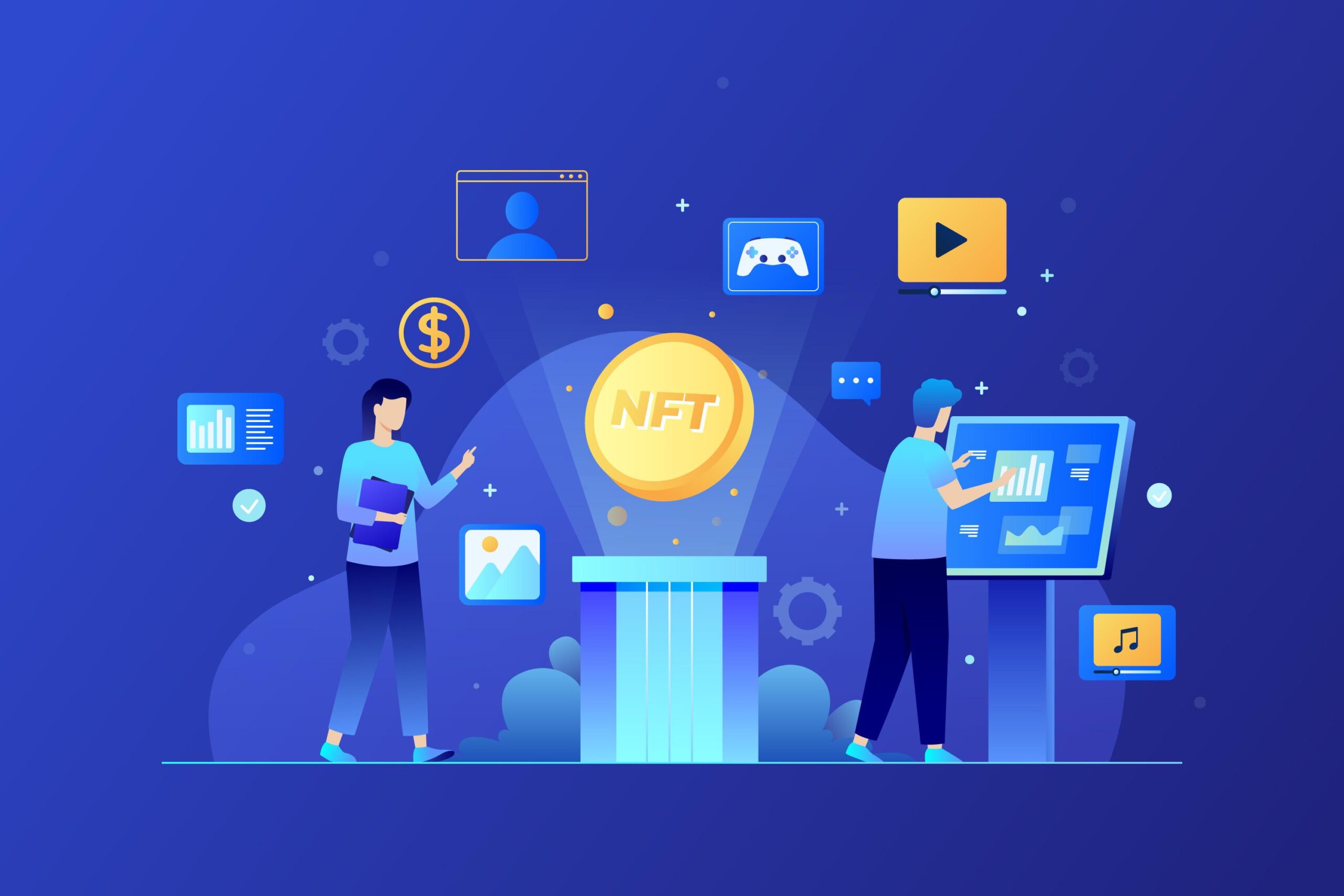
In the ever-evolving landscape of digital innovation, Non-Fungible Tokens (NFTs) have emerged as a groundbreaking phenomenon, reshaping the way we perceive and experience ownership. NFTs have taken the world by storm, transcending the boundaries of traditional ownership and establishing a new paradigm that intertwines the digital and physical realms.
Understanding NFTs
What Are NFTs?
NFTs are unique digital assets that represent ownership or proof of authenticity of a specific item or piece of content using blockchain technology. Unlike traditional cryptocurrencies such as Bitcoin or Ethereum, which are interchangeable and have the same value, NFTs are indivisible and distinct, making each one a one-of-a-kind digital entity.
How Do NFTs Work?
NFTs are built on blockchain platforms, predominantly using Ethereum’s ERC-721 standard. This technology ensures the creation of a secure and transparent ledger that records the ownership and transaction history of each NFT. The blockchain acts as an unforgeable certificate of authenticity, providing a foolproof way to verify the uniqueness and ownership of digital assets.
The Revolution of Ownership
Digital Art and NFTs
One of the most significant impacts of NFTs has been in the realm of digital art. Artists, previously struggling to monetize their digital creations, can now tokenize their work as NFTs, enabling them to sell and trade their pieces in a decentralized marketplace. This shift has democratized the art world, allowing creators to connect directly with their audience and receive fair compensation for their talents.
Music, Gaming, and Beyond
Beyond the art world, NFTs have found applications in various industries. Musicians can tokenize their music, granting fans exclusive access or ownership rights. In the gaming industry, NFTs are revolutionizing in-game assets, allowing players to own and trade digital items truly. The potential applications extend to virtual real estate, collectibles, and even educational content.
Challenges and Opportunities
Environmental Concerns
While NFTs offer exciting possibilities, they have not been without controversy. The environmental impact of blockchain technology, particularly in energy consumption, has raised concerns. However, ongoing efforts within the industry aim to address these issues, with some platforms exploring more sustainable alternatives.
Legal and Ethical Considerations
As NFTs gain mainstream acceptance, legal and ethical considerations come to the forefront. Issues such as copyright infringement, plagiarism, and fraud have been reported. It is crucial for the industry to establish robust frameworks and regulations to protect both creators and consumers.
The Social Aspect of NFTs
Community Engagement
NFTs thrive on community engagement. Many NFT projects leverage social media platforms and online communities to build a dedicated fan base. This sense of belonging and shared interest enhances the overall experience for collectors and creators alike. Discord and X (formerly known as Twitter), in particular, have become hubs for NFT enthusiasts to discuss, share, and discover new projects.
Collaborative Creation
NFTs have sparked a new era of collaborative creation. Artists, musicians, and even brands are joining forces to produce unique and exclusive content. Collaborative NFT drops often involve multiple contributors, resulting in a fusion of diverse talents and styles. This collaborative approach not only expands the creative horizon but also cultivates a spirit of unity within the NFT community.
Evolving Technology
Layer 2 Solutions
To address the environmental concerns and scalability issues associated with blockchain networks, the industry is exploring Layer 2 solutions. These are secondary protocols built atop existing blockchains like Ethereum, aiming to enhance transaction speed and reduce energy consumption. Implementing Layer 2 solutions could potentially make NFTs more sustainable and accessible.
Integration with Emerging Technologies
As technology advances, NFTs are integrating with emerging trends. Augmented reality (AR) and virtual reality (VR) are being explored to provide immersive experiences for NFT collectors. Imagine walking through a virtual gallery showcasing your NFT art collection or attending a virtual concert where ownership of an NFT grants exclusive access.
NFT Philanthropy
NFTs are not just about ownership and profit; they also hold the potential for social impact. Some projects are using NFTs to raise funds for charitable causes, leveraging the blockchain’s transparency to ensure that contributions reach their intended destinations. Social impact NFTs showcase the versatility of this technology in contributing to positive change.
The Road Ahead
NFTs and Web 3.0
NFTs are seen as a crucial component of the evolving landscape known as Web 3.0, where decentralization, interoperability, and user-centric experiences take center stage. As NFTs continue to integrate with emerging technologies like augmented reality and virtual reality, the possibilities for digital ownership are poised to expand further.
Cultural Impact
Beyond the technological aspects, NFTs are influencing our cultural understanding of ownership. The concept of true ownership, verified and recorded on the blockchain, challenges traditional notions and fosters a sense of empowerment among creators and consumers alike.
Conclusion
In conclusion, Non-Fungible Tokens represent a seismic shift in the way we perceive and engage with ownership. From digital art to virtual real estate, NFTs are transforming industries, empowering creators, and offering new avenues for innovation. While challenges exist, the potential for positive change and cultural impact is undeniable. As we navigate the uncharted waters of this digital frontier, one thing is certain: NFTs are not just a trend but a fundamental force shaping the future of ownership.



